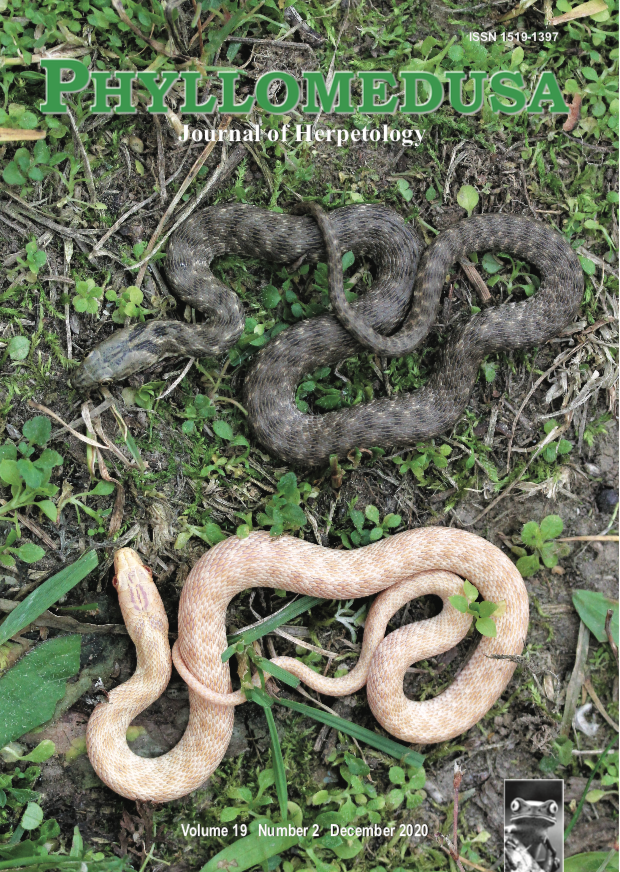The relationship between body and substrate color for Ambystoma altamirani (Caudata: Ambystomatidae) from the Arroyo los Axolotes, Mexico
DOI:
https://doi.org/10.11606/issn.2316-9079.v19i2p243-251Keywords:
adult, color, salamander, streamAbstract
The relationship between body and substrate color for Ambystoma altamirani (Caudata: Ambystomatidae) from the Arroyo los Axolotes, Mexico. To determine whether the coloration of Ambystoma altamirani varies and whether the color is related to the color of the salamander’s substrate, A. altamirani from the Arroyo los Axolotes, state of México, Mexico, was examined. The study was conducted from February 2018 to January 2019, and the colors classified by comparison with a standard color wheel. The most common base color was olive-green (64%) followed by black (21%). The most common color combinations were olive-green with black markings (44%), solid black (14%), and olive-green with black and yellow markings (11%). Olive-green salamanders were present in every month of the study, whereas the other base colors were found in fewer months, with the greatest diversity of base colors being observed from April to July. Olive-green, black, and “light” A. altamirani were found on dark substrates more frequently than expected based on availability compared to intermediate or light substrates. Because there is no evidence for substrate color matching, substrate selection likely is based on other environmental features.
Downloads
Downloads
Published
Issue
Section
License
Copyright (c) 2020 ESALQ-USP

This work is licensed under a Creative Commons Attribution-NonCommercial-NoDerivatives 4.0 International License.
All material originally published in Phyllomedusa belongs to Escola Superior de Agricultura Luiz de Queiroz - Universidade de São Paulo. All contents are under a license of Creative Commons BY-NC-ND.


 Impact Factor (JCR): 0.600
Impact Factor (JCR): 0.600 CiteScore: 1.0
CiteScore: 1.0